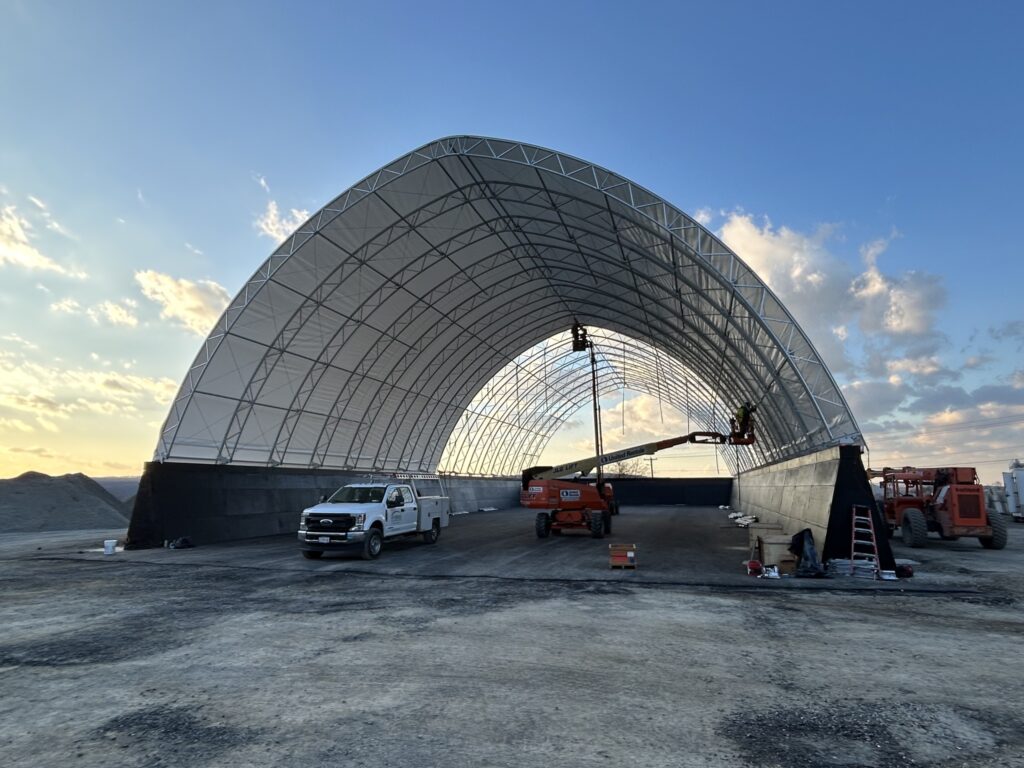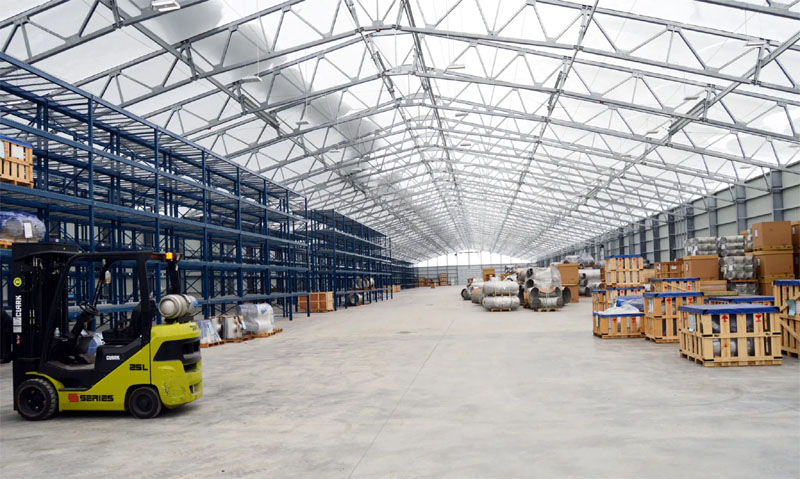 Advantages of Fabric Buildings
Advantages of Fabric Buildings
Steel and fabric buildings (or hybrid buildings) provide numerous advantages over traditional structures, which make these a great option for a variety of warehouse storage and business applications. From lower construction costs to energy efficiency and versatility, clear span fabric buildings provide a range of benefits over traditional structures.
Cost Savings
Perhaps the biggest advantage of fabric buildings is their cost savings. Coverall structures are significantly less expensive to construct than traditional structures, both in terms of materials and labor costs. Furthermore, fabric buildings require less utilities and maintenance, which means that you will continue to save money.
Construction Time
Tension fabric buildings can be installed much faster than traditional buildings – without the need for extensive site preparation or heavy equipment. The lightweight materials and modular design allow rapid construction, significantly reducing project timelines.
Versatility
Fabric buildings are extremely scalable (height, width, and length) and versatile. They can be used for a wide range of applications including warehouse storage, manufacturing facility, sports complex, horse riding arena, greenhouse, etc. Any of these fabric building models can be customized to meet your specific needs.
 Natural Light and Clear Span Interior
Natural Light and Clear Span Interior
The natural lighting from fabric covered buildings results in a brighter atmosphere than traditional structures and eliminates the need for artificial lighting for reduced energy costs. The massive clear span interior allows for improved visibility and storage capacity.
Enhanced Durability
High-quality tension fabric buildings are engineered to withstand various weather conditions, including heavy snow loads, strong winds, and even seismic activity. These buildings are designed to be held down, not up. The fabric membranes used are UV-resistant, flame-retardant, and can withstand wear and tear, ensuring long-lasting performance.
Improved Energy Efficiency
Fabric structures provide excellent energy efficiency due to their translucent fabric membrane. During the day, natural light can penetrate the fabric, reducing the need for artificial lighting and lowering energy consumption. Additionally, the fabric’s insulating properties help maintain comfortable indoor temperatures, reducing the demand for heating or cooling.
In conclusion
As businesses shift towards more innovative and versatile solutions, fabric structures are an excellent choice for a wide range of building applications. These environmentally friendly buildings check all the boxes and provide a wide range of advantages over conventional buildings. Fabric buildings should certainly be considered for your next building or expansion needs.
